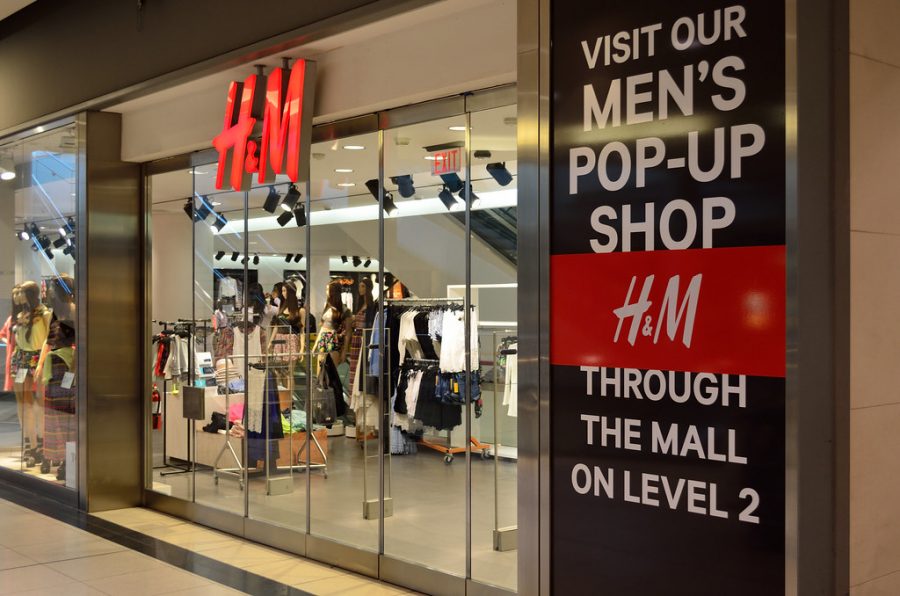The beneficial alternatives to fast fashion
Photo courtesy of Creative Commons
Fast fashion companies like H&M are environmentally destructive. Instead of supporting these brands, people should refrain from the overconsumption of clothing and shop from sustainable clothing businesses.
January 5, 2021
Walking into a mall, you see the flashy signs, the big discounts and the mannequins dressed to follow the latest clothing trends. The majority of well-known clothing stores like Zara, H&M and Urban Outfitters are part of the fast fashion industry, creating cheap quality clothing designed to keep up with the constant, changing trends. Their products are accessible, affordable and trendy, making it easy for customers to consume a lot of their clothing.
Most people know that fast fashion is bad, yet continue to support the environmentally destructive and unethical industry. Perhaps it’s because they aren’t fully aware of the environmental impact that supporting these brands has, or maybe they just choose to ignore the negative implications because it’s more convenient. But what makes it so terrible?
First of all, the fashion industry contributes to 10% of global carbon emissions, worsening the existing climate crisis. In addition to polluting the atmosphere, the production of clothes also contaminates rivers and streams during the textile dyeing process. Fast fashion is also the second leading consumer of water following the agriculture industry. According to Business Insider, “It takes about 700 gallons of water to produce one cotton shirt,” which is equivalent to the amount of water an average person drinks in three years. Also, the majority of textiles end up in the landfill, further polluting our planet. When we walk into fast fashion shops and see the trendy clothes, we need to remember the environmental destruction that went into its creation before purchasing a product and ask ourselves if it’s really worth it.
The consequences of fast fashion do not stop at the environment. These companies overwork their employees to keep up with mass consumerism and the latest trends. Workers are given minimal breaks and little to no pay. The fast fashion industry cultivates an unethical work environment, so by purchasing their products, you are supporting their behavior.
What should we do instead? It’s simple. Buy less clothes. By focusing on the sustainability of a product, you are actively deciding to be a part of the solution. Shopping from sustainable and ethical brands like Patagonia or Everlane is a better alternative. Brands like these have committed to using fabric made out of recycled materials, using cotton that hasn’t been sprayed with chemicals and treating their workers with fair conditions.
However, in order for these changes to be possible, sustainable companies’ products are often significantly more expensive. The average price of a t-shirt from a sustainable brand is around $30. These prices may seem unreasonable, but again, you do not need to buy many clothes. It’s better to have five well-made shirts that can last for years, as opposed to 15 shirts that can only be worn for a few months.
Shopping at thrift stores is also a great way to be more environmentally conscious. Buying second-hand clothing can minimize your contribution to textile waste and can be a more practical option in comparison to purchasing from expensive sustainable brands. Although shopping for clothing at thrift stores is beneficial to the environment, continue to be aware of how much you are consuming and remember that you do not need to buy more than what you need. Some people shop at thrift stores out of necessity and you don’t want to take away their accessibility to affordable clothing.
So now, when you walk in the mall with the flashy signs and the well-dressed mannequins, remember that you don’t need to buy clothes that will only be worn once.










































